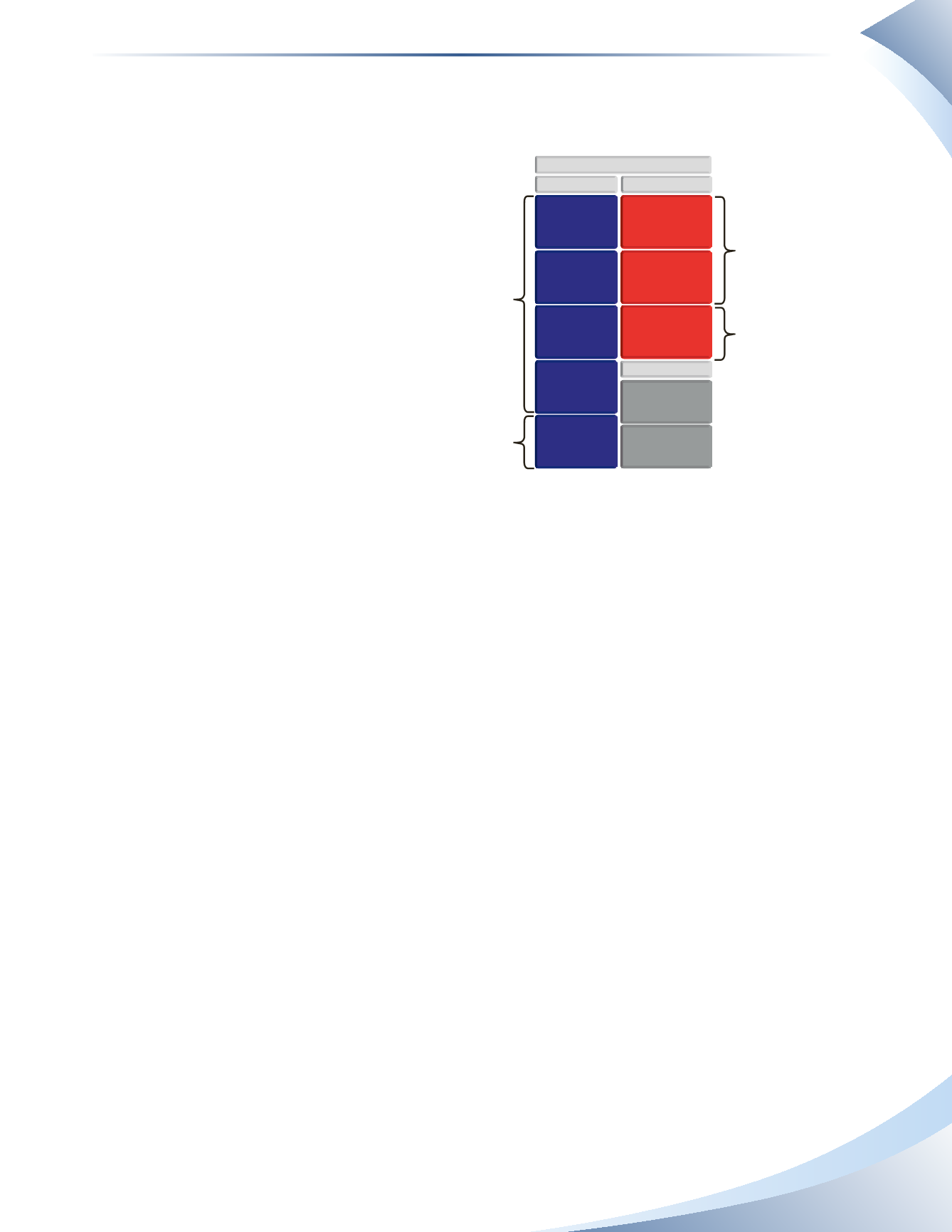
Chapter 6
The Accounting Cycle: Statements and Closing Entries
151
Property, plant and equipment are long-term physical assets used to help run the business. This
category contains several types of long-term assets such as land, building, equipment and furniture.
Each of these items must be presented
separately along with any accumulated
depreciation to show its net book value.
Long-term investments are investments
by the business by buying debt (e.g. bonds)
or equity (e.g. shares) of another company.
These are assets because the business owns
the investment and expects to receive
benefits from owning them. Benefits are
usually cash receipts of interest or divi-
dends.
Intangible assets are long-term assets that
lack a physical body. They provide legal
rights and include items such as patents,
trademarks or copyrights. Some intan-
gible assets such as patents have their cost allocated across their useful life, similar to how depre-
ciation is accounted for property, plant and equipment.These intangibles must show their net book
value. Different types of intangible assets may require different methods of recording depreciation
or reductions in their value.
Goodwill is a special type of intangible asset. It only arises when a business buys another company
and pays more than the fair value of the company’s net assets.
Current Liabilities vs. Long-Term Liabilities
Liabilities are divided into two categories
1.
Current liabilities
are amounts due to be paid within the next 12 months. Examples of current
liabilities include accounts payable, interest payable and unearned revenue. (assuming the
related revenue will be earned within the next 12 months).
2.
Long-term liabilities
are amounts due to be paid after 12 months. Examples of long-term
liabilities include bank loans and mortgages.
Long-term liabilities usually have a portion that is considered current. That is, a portion must
be repaid within the next 12 months. To properly plan for cash payments in the upcoming year,
accountants will separate the current portion from the long-term portion on the classified balance
sheet.
For example, if a company had a $50,000 bank loan that was supposed to be paid off in five equal
installments, $10,000 ($50,000 ÷ 5 years) would be considered current and the rest ($40,000)
ASSETS
BALANCE SHEET
LIABILITIES
CASH
OFFICE
SUPPLIES
PREPAID
EXPENSES
PROPERTY, PLANT &
EQUIPMENT
ACCOUNTS
PAYABLE
UNEARNED
REVENUE
ACCOUNTS
RECEIVABLE
BANK LOAN
OWNER’S EQUITY
OWNER’S CAPITAL
OWNER’S DRAWINGS
Current assets
Current liabilities
Long-term assets
Long-term liabilities
________________
figure 6.21


